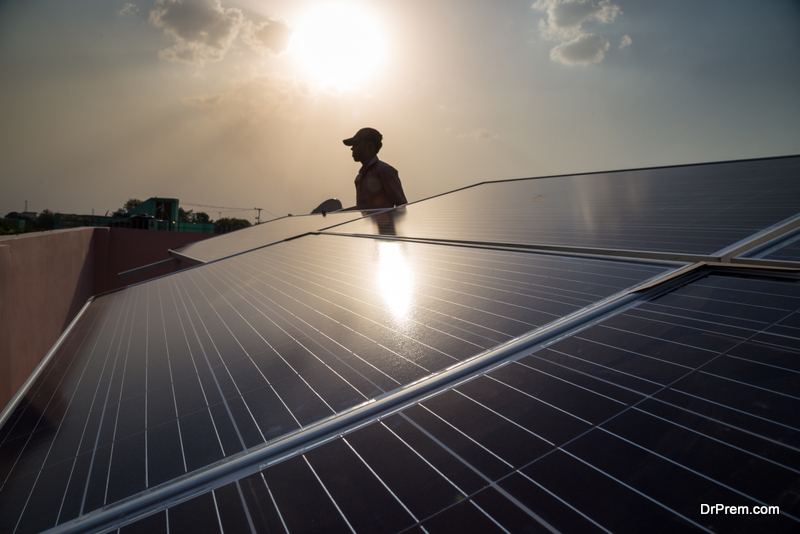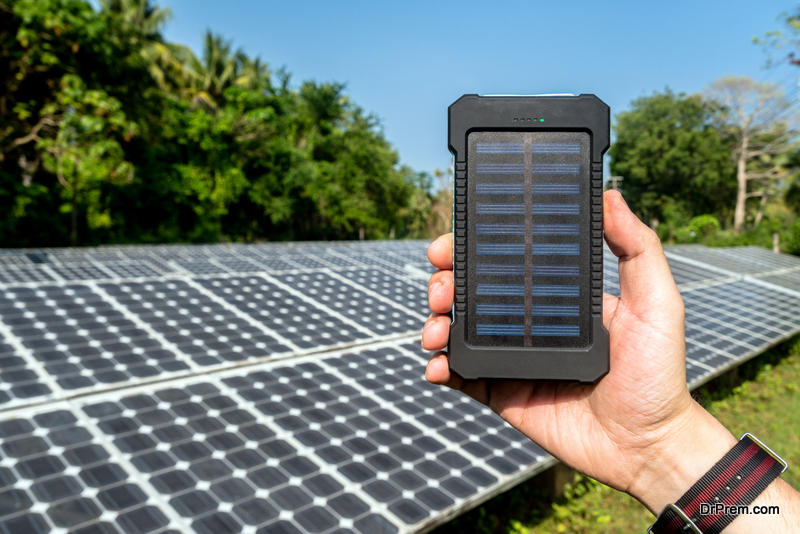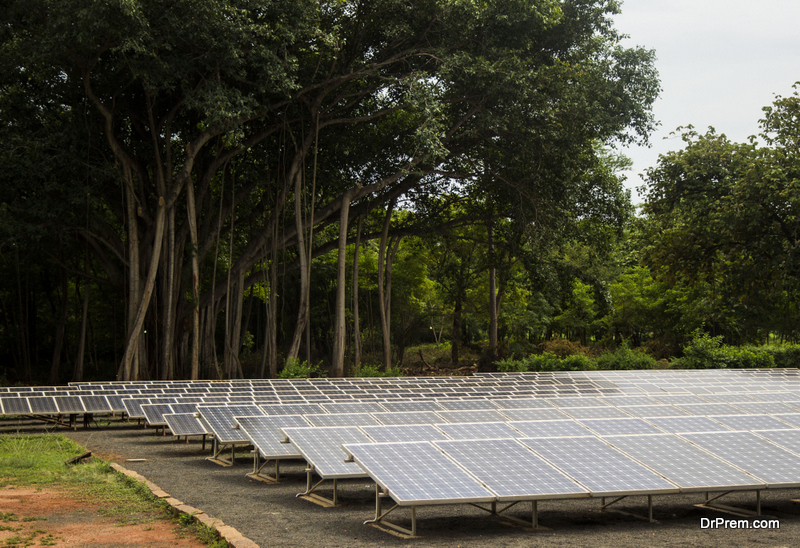Sun based power costs have achieved another record low in India, quicker than investigators anticipated and additionally undermining the cost of petroleum derivative produced control in the nation. The cost of solar energy likewise improves the probability that India will meet – and by its own forecasts, surpass – the sustainable electricity targets it set at the Paris atmosphere agrees in December 2015. India is the world’s third-biggest carbon polluter, with discharges gauge to no less than twofold as it tries to build up its economy and lift a huge number of natives out of destitution. Guaranteeing it creates however much of that, vitality as could be expected from sustainable sources is viewed as critical to restricting calamitous worldwide temperature increments.
A case study: Solar energy cheaper than Fossil Fuel
At an invert sell off in Rajasthan on Tuesday, control organizations Phelan Vitality and Avaada Power each offered to charge 2.62 rupees for every kilowatt-hour (kWh) of power created from sunlight based boards they want to work at a vitality stop in the desert state. Last year, the most reduced offer was 4.34 rupees for each kWh. Investigators called the 40% cost drop “world notable” and said it was driven by less expensive fund and developing financial specialist trust in India’s promise to drastically expand its sustainable power source limit. It decreases the market cost of renewable energy taxes well past the normal charged by India’s biggest warm coal combination, right now around 3.20 rupees for every kWh. Discount value of solar power prices offers for wind vitality additionally achieved a record low of 3.46 rupees in February.
Expert’s views
Kanika Chawla, a senior program lead at the Delhi-based Chamber for Vitality, Condition and Water (CEEW), said it was empowering that Rajasthan venture bidders were “new players, not a similar old market pioneers”. “It appears there is sufficient happening to pull in speculation, draw in enthusiasm from organizations who have generally been mindful,” she said. Cost of renewable energy were probably going to drop further if the cost of obtaining cash kept on falling – which she said was one of the real drivers in making solar energy cheaper than fossil fuel. “Any future incremental gains in costs won’t originate from the decrease in solar power prices, they will originate from decreases in the cost of fund,” she said.
The financial point of view
Financial specialists were likewise likely empowered by an ongoing move to permit the state-supported Sun oriented Vitality Enterprise of India to go about as an underwriter in understandings between vitality engineers and India’s obligation ridden control dispersion organizations. Tim Buckley, an executive at the Establishment for Vitality Financial matters and Money related Examination, said the most essential factor making solar energy cheaper than fossil fuel was the “straightforwardness, life span and conviction” of the nation’s vitality arrangement. “That is totally basic since when you contribute for 25 to 35 years, you require conviction and lucidity of arrangement,” he said.
India’s views on this aspect
“India has head administrator [Narendra] Modi saying this is his main target, you have vitality serve [Piyush] Goyal discussing it consistently. There is no doubt as far as anyone can say about Goyal’s responsibility to this program and Modi’s underwriting of what Goyal’s doing,” he said. By 2022, India intends to have the ability to create 175 gigawatts of sustainable electricity from sun oriented, biomass and wind vitality. A draft report by the nation’s power office in December anticipated that limit would increment to 275 gigawatts by 2027. A similar draft report said it was far-fetched India would require any new coal control stations for no less than 10 years, past the 50 gigawatts of tasks as of now in the pipeline.
The situation in detail
 To exacerbate the situation, sun oriented power is set to wind up considerably less expensive. An ongoing report of the World Business Gathering for Practical Improvement (WBSCD) expects the per kWhr cost of sun oriented capacity to “diminish 5-6 for each penny for each year finished the following five years”. In like manner, the expenses of setting up sun based plants are likewise anticipated that would descend. “Costs for a completely dispatched utility scale sun based plant in India are probably going to diminish from around ₹4.2 crore a MW in 2017 to ₹3-3.2 crore a MW in 2020 — an annualized decrease of 6 for every penny,” the report says. The assessments have been gotten from showcase knowledge based projections made by sunlight based consultancy Extension to-India.
To exacerbate the situation, sun oriented power is set to wind up considerably less expensive. An ongoing report of the World Business Gathering for Practical Improvement (WBSCD) expects the per kWhr cost of sun oriented capacity to “diminish 5-6 for each penny for each year finished the following five years”. In like manner, the expenses of setting up sun based plants are likewise anticipated that would descend. “Costs for a completely dispatched utility scale sun based plant in India are probably going to diminish from around ₹4.2 crore a MW in 2017 to ₹3-3.2 crore a MW in 2020 — an annualized decrease of 6 for every penny,” the report says. The assessments have been gotten from showcase knowledge based projections made by sunlight based consultancy Extension to-India.
The Chinese point of view
Nonetheless, module costs driven by an overabundance caused by oversupply in China will make solar energy cheaper than fossil fuel. Nevertheless, additionally decreases in module costs will be “steady and restricted” because of numerous reasons, for example, late producer liquidations in the US, extended budgetary places of Chinese makers and the progressing exchange cases. Thus, for wind ventures, capital cost decreases will be direct, yet mechanical enhancements would help cut down the per kWhr costs. The WBCSD report, which focuses on corporate purchasing of sustainable power source in India, takes note of that almost 2,000 MW of sustainable power source limit has been worked for guide offer of vitality to buyers (open access) and this will just increment. It expects that the ‘corporate PPA (control buy assertion) advertisements will include 6,600 MW of limit amongst now and 2023.
The corporate world insight
In 2016-17, businesses and business foundations utilized 533 TWhr of power, representing a large portion of the nation’s utilization. Possibly, these could be purchasing sustainable power source specifically from vitality organizations since green power is today less expensive than what the utilities supply. The issues are for the most part the controls. For example, in the event that you have an associated heap of less than 1 MW, in all States you are ineligible to purchase control straightforwardly. This bars a ton of buyers, who are then compelled to purchase costlier power from the utilities. ‘Net metering’ controls are another issue. These directions fundamentally make it exceptionally troublesome for, say, a housetop sunlight based plant proprietor to offer any surplus power. “Postponement or refusal to allow open access consent by utilities… is an obstacle that corporate purchasers and engineers confront consistently,” the report says.
Corporate saga continues
Corporate purchasing (or self creating) sustainable power source in India is a piece of a worldwide super pattern. A report of the Global Sustainable power source Office of a month ago said that organizations in 75 nations purchased (or self-delivered) 465 TWhr of sustainable power source, generally equivalent to the yearly power utilization of France. It additionally said India and South Africa are among the main developing economies to see development in corporate purchasing of renewable. No less than 35 organizations head-quartered in India positioning India ninth among the main 10 nations where corporate purchasing of sustainable power source is going on. Around the world, 130 organizations have proclaimed that all the power they devour would originate from sustainable power sources, and 42 have accomplished it. Four Indian organizations are on the “RE100” list — Infosys, Dalmia Concretes, Goodbye Engines and Hatsun Agro.







